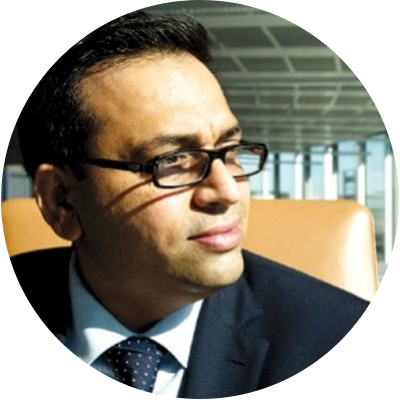As more and more organisations grab the bull by the horns and start their journey towards using robotic process automation (RPA) a wealth of early-adopter case studies are starting to emerge to help guide the trek
Mindfields has clients at all the different stages and is documenting the challenges and discoveries to make the journeys of future clients as smooth as possible.
In order to start sharing some of this knowledge, we have been running webinars, including one titled "Setting up the Centre of Excellence (CoE) for RPA - What, Why and When"
A full recording of the webinar and presentation can be accessed at any time by clicking here.
This event included the thoughts of David Thurkle, who has been instrumental in setting up a CoE at National Australia Bank, one of Australia’s largest institutions, which also has a presence in Europe.
He shared both his experiences and his thoughts on a wide-ranging array of questions submitted by webinar registrants.
We also discussed the findings of five polls, which had been conducted during the webinar among the participants from leading top 100 Global organisations.
We chose this topic as most of the clients that are starting or have started on RPA have approached us to seek advice on setting up a Center of Excellence.
What Is RPA CoE
A Robotic Process Automation Center of Excellence (RPA CoE) is a team or department within an organization that manages the implementation, governance, and support of RPA initiatives. The CoE is a central hub for RPA programs, best practices, and standards. They provide expertise, guidance, and support to various business units or departments utilizing RPA tools within the organization
Here are some essential functions typically performed by an RPA CoE:.
Organization The CoE creates the structure and governance framework for implementing RPA. This involves defining the roles and responsibilities of team members, establishing reporting lines, and ensuring alignment with the organization's overall objectives.
Governance It sets up governance policies, guidelines, and standards for Robotic Process Automation (RPA) initiatives. The CoE defines the rules and procedures for RPA development, deployment, security, and compliance. It ensures that RPA projects are implemented successfully and provides the necessary support.
Technology In terms of technology, the CoE evaluates, selects, and manages the RPA technology stack and automation. They conduct research, perform proof of concepts, and work with IT teams to choose the most suitable RPA tools and platforms.
Processes It specializes in identifying and evaluating strategies that can be automated. It collaborates with the owners of the processes and experts in the subject matter to restructure, improve processes for automation and deploy RPA rightly.
Operations Throughout your RPA lifecycle at work, you'll encounter various IT infrastructure and non-life-related challenges. And make structural changes accordingly. This includes configuring, scripting, and debugging them, as well as overseeing their deployment and monitoring in production.
Essential Insights : Unveiling 12 Fundamental Learnings for Establishing an Robotic Process Automation (RPA) Center of Excellence.
-
There is no standard definition or composition for a successful CoE. Its construct and content differ depending on factors such as the industry vertical and operating model. It is also a different approach within processes that were already outsourced or offshored (including captive centres) compared to onshore and in-house processes.
-
A CoE should be used to promote and maintain existing organisational dynamics and to sustain current and future RPA initiatives. It should establish a strong relationship with the technology teams early and make sure tech staff are part of the CoE. Navigating the change management and support landscape in technology can be complex and the relevant staff are a key part of the overall success of RPA at an enterprise scale.
-
Ownership of the CoE should reside mainly within the business, rather than any specialised IT group that may exist. Most respondents to our survey felt that it is best to report in to a chief operating officer if one exists in the organisation.
-
Most organisations are only starting to set up a CoE after a proof of concept has been successfully completed.
-
Establishment of the CoE should be driven by the pace at which the organisation wants to expand its RPA delivery capacity and increase the delivery velocity.
-
Organisations are tending to opt for a centralised CoE structure in the initial phase of their journey, before moving to a decentralised structure in the medium to long term.
-
If set up correctly the CoE provides a great incubator for the development of RPA skills for the enterprise.
-
The CoE for RPA should be upgraded to include machine learning, cognitive computing and artificial intelligence as the organisation’s journey progresses.
-
Before marketing the idea of RPA to the broader organisation the CoE should have demand management capabilities, as everyone tends to want to get in first. Business units can get very creative with RPA and demand will pick up quickly.
-
The CoE should layout guidelines for the prioritisation of processes for automation. This should include business case tracking, RPA software selection, license allocation, hardware asset allocation, coding standards, training and resource (talent) management.
-
It is important for the CoE to have an early engagement with colleagues within risk management, security, and other control groups. This should include auditors (both internal and external).
-
All processes should be prepared with the acceptance that at some point a reverse transition to human interaction – or a better brand of RPA software – may be required.
Of course viewing the full proceedings of our event will put these points in a more complete context, and you will also see that there were many more valuable ideas shared on the day.
This was our third webinar in a series of initiatives to guide our network on the latest in RPA and AI with senior executives who have lived through it. We have automated more than 750 processes and we too have failed initially. But now, in last 24 months – 100% of our clients have a successful RPA journey to share.
Topic: Robotic Process Automation, Webinars, Blog


